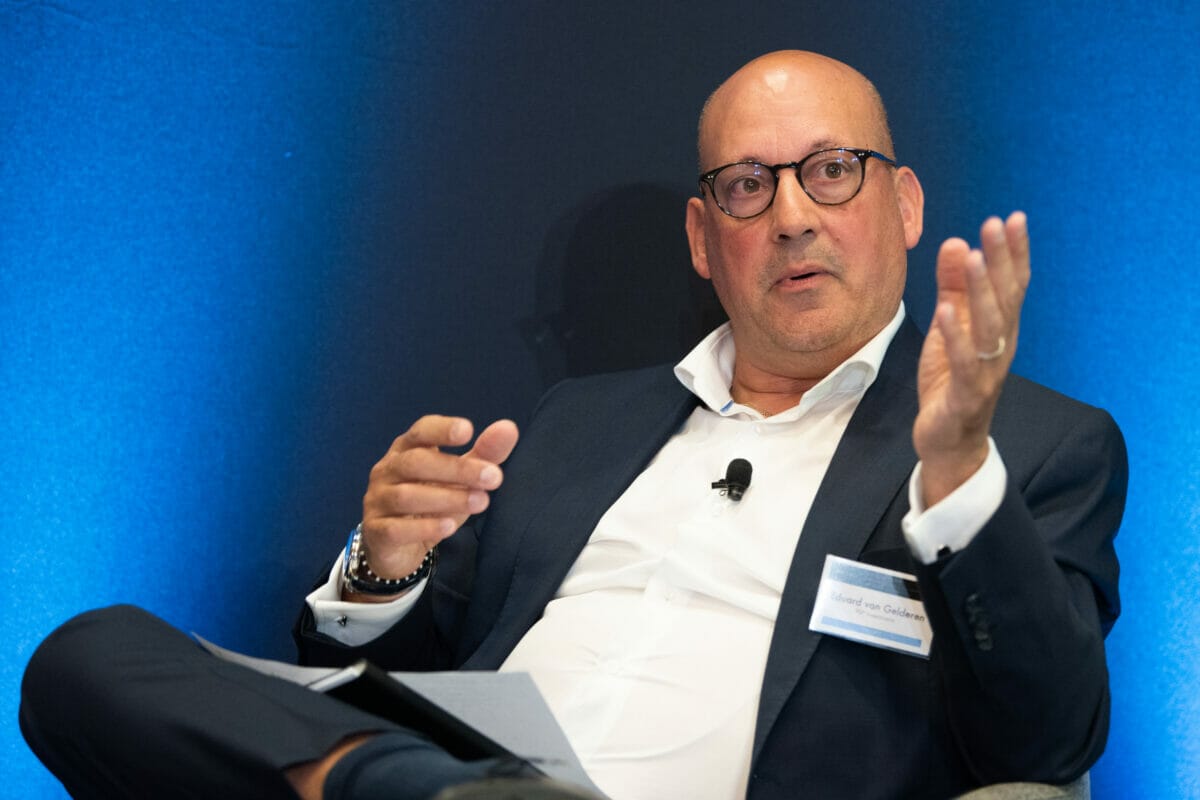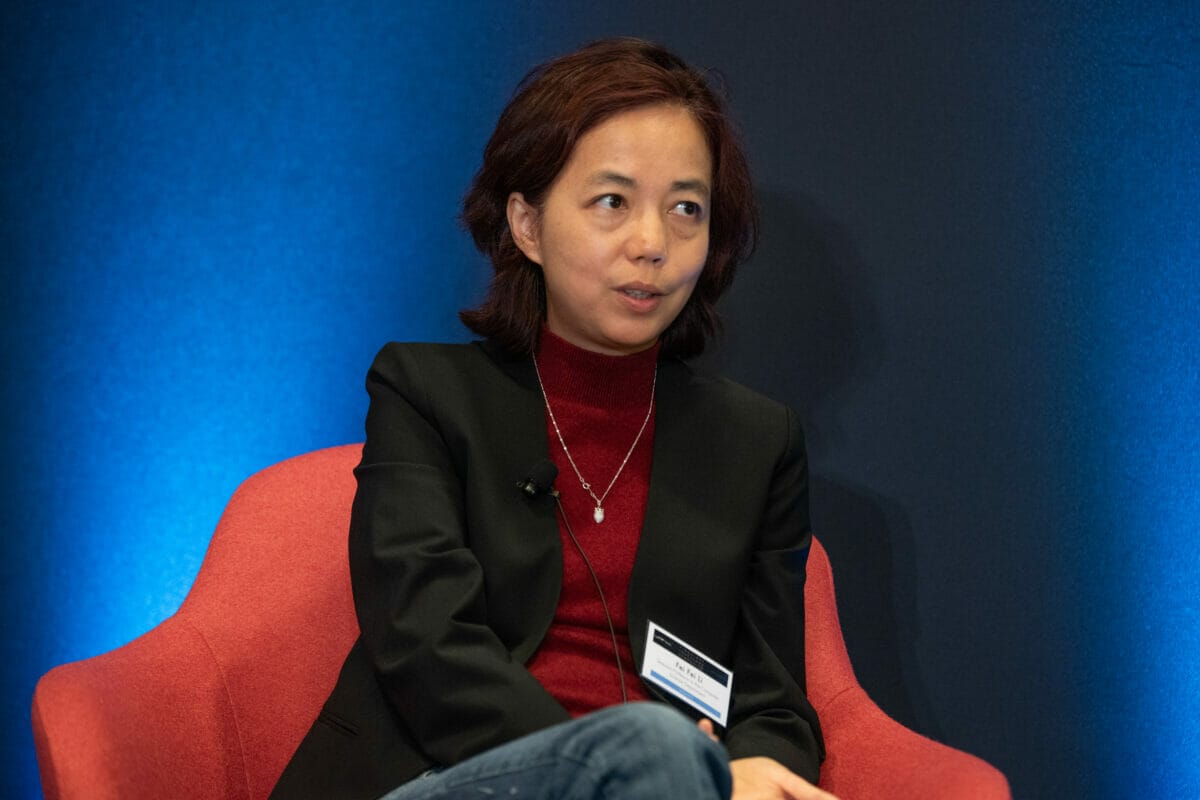APG and PSP Investments told investors at the Fiduciary Investors Symposium that unless they embrace technology and innovate, their licence to operate will be under threat. They explain how and why they are embracing technology in all aspects of their investment process and operations.
Asset owners must embrace technology or have their licence to operate questioned by stakeholders according to two large asset owners who are leading the charge on bringing innovative technologies to investment processes in a bid to increase efficiency and outcomes.
Eduard van Gelderen (pictured), chief investment officer at Canada’s C$243 billion PSP Investments, told the Fiduciary Investors Symposium at Stanford last month that pension funds’ licence to operate is under threat if they do not embrace technology.
“I am 200 per cent convinced that investment models will change and will change rapidly,” he said. “If you take a step back and ask what your licence to operate is, ours is to keep the defined benefit system alive and sustainable. I don’t think that is possible if we continue to work the same way as we did before.”
He said that technological changes are happening so quickly if pension funds don’t keep pace and deliver results the general public will start to ask “why do you actually manage our money”.
“So to me that is one of the drivers of why I am so eager to change the investment process and embed the possibilities of technology and to really exploit the technology the best way we can, that is one of the ways to actually keep your licence to operate.”
Van Gelderen was part of a panel with Peter Strikwerda, global head of digitalisation and innovation at APG, chaired by Ashby Monk, who with Dane Rook in 2022 wrote The Technologized Investor, a play on Benjamin Graham’s book the Intelligent Investor, with the subtext that technology is the future of intelligence.
Strikwerda said APG was innovating across the business with focus on “pockets of value” including portfolio construction, responsible investment, investment decision making, client services, and efficiency with all aspects of the business now “highly data driven”. (See Portfolio managers 3.0: APG’s digital future)
“Over the last 10 years I have been involved in close to 100 innovation initiatives from very small to very big,” he said. “What we do in our innovation approach is we merge business, IT and data knowledge together. One of the key implications of working with data is you need to make it ‘business owned’ and bring the capabilities together in the same teams.”
He said of the 100 initiatives investigated only about 20 per cent survive with a very systematic approach taken to innovation.
“We kill about 80 per cent of those innovations,” he said. “It’s not by luck we stumble into things, innovation needs discipline. Investors need to get mature in that, they need to learn how to do that, and that takes time.”
Strikwerda said investors need to embrace a change of mindset in order to succeed in innovation.
“In a normal operations environment you have KPIs and control mechanisms. When you want to innovate you approach that differently, you want to take risks, make mistakes and pivot from those, a learning ability is key to be able to innovate.”
Monk, who is the executive director of the Stanford Research Initiative on Long-Term Investing noted within funds management most of the technological evolution comes from within the industry – from funds managers or custodian banks – but there was little embracement of start ups.
“A lot of the technology we see in this industry emerges from this industry. We are sitting here at Stanford and the students here are looking for problems to solve. Why not the $140 trillion problem of pension funds?”
APG’s Strikwerda says the fund does occasionally work with startups and has also tapped into the Stanford ecosystem.
“We invest in some venture. Every now and then we take a stake in a company but we do it for strategic reasons, not from an investment perspective,” he said.
The investment in Entis, an AI-powered data science platform, that is a foundational data provider for the Sustainable Development Investment Asset Owner Platform is a good example.
“We also do some co-creation working on specific problems I find that interesting because we learn a lot from that and do a lot of knowledge transfer,” he said.
But APG’s experience demonstrates how difficult it is for large, slow-moving, regulatory-burdened asset owners to operationalise good ideas.
“There is a big difference between a nice idea and something that will fit all our rules and regulations that we need to comply with in order to operationalise something,” he said. “You can’t just put something into a process where you run billions of euros in transactions. There is a real challenge there. To really scale it up it has to be proven before we can really apply it at scale. In between is the question do you want to put in some small efforts to get it going, that is difficult because it is still pension money, you can’t gamble with that. It’s not easy.”
Monk noted with large scale investments like technology – which can be up to $150 million – the business case for value creation from that has to be clear.
Van Gelderen says in making that business case it is important to focus on the individual asset owner’s mission.
“When we think about new technologies and advanced analytics we are keen to be very precise on where the most value for us is,” he said. “We try to team up with strategic partners so that we can rely on some of the technology they can bring to us and we can piggyback on what they do, that’s an attempt to keep the cost low.
“If you think about the business of asset owners, everyone feels it’s a scalable business, but the reality is very different. If you take the biggest cost drivers, human capital and technology, both are actually growing at 7-8 per cent. That is something boards don’t like to see, so they ask you to make very clear decisions on where you spend it and the value add and how you operationalise it. We do it with partners.”
The board and management changes at PSP over the past few years have been an opportunity to focus more on technology.
“There was a sense of urgency and we need to think about it, the topic came up over and over again,” he said. “The Canadian model has been extremely successful over the past 20 years but that is no guarantee for the next 10. The good thing is I do have the support from the board to look into innovation and how it applies to our investment processes. It is still small scale but the successes have been adopted, and we need to give it room to grow.”
Strikwerda says it is important that investors realise that “more data is not the goal”.
“Like the saying more money more problems, it is also true that more data more problems. You need to be very concise and focused on where you put your money,” he advised, adding that problem is magnifying with technological advancement. “The problem is growing day by day because the data and technology available is growing so fast and with generative AI it is tremendous. Spending your money wisely and having capability to make those decision is key.”
He said APG continuously has conversations with its board on how the investments in technology could be translated into alpha.
“The conclusion is you can’t, you can’t isolate it, unless maybe in quant,” he said. “Any outcome is a combination of technology and human input so you can never say we are only generating this much alpha isolated by technology. So what we did, we reversed it so all our investment teams have a KPI on systematic decision making, which breaks down on using technology and standardised data, because our belief is that will lead to better outcomes.”



